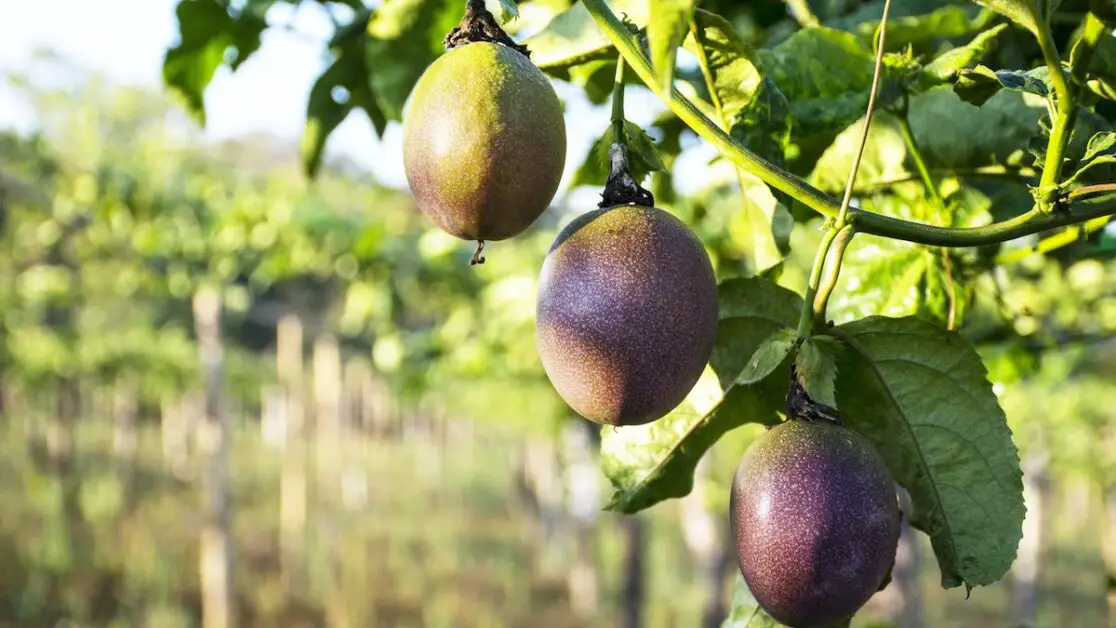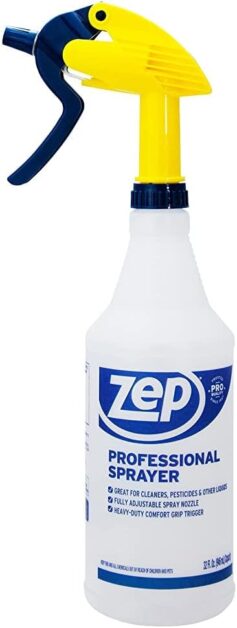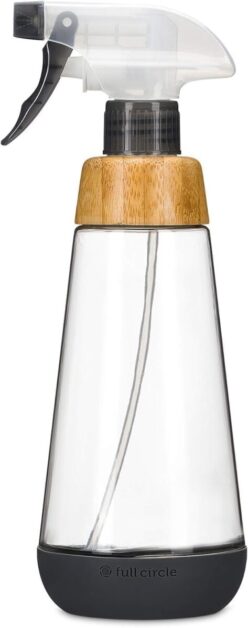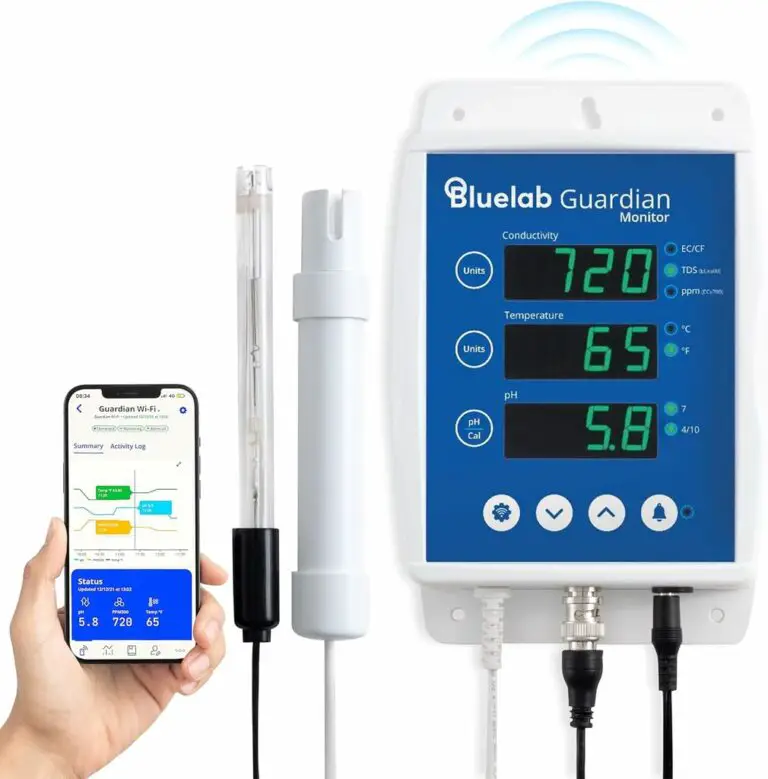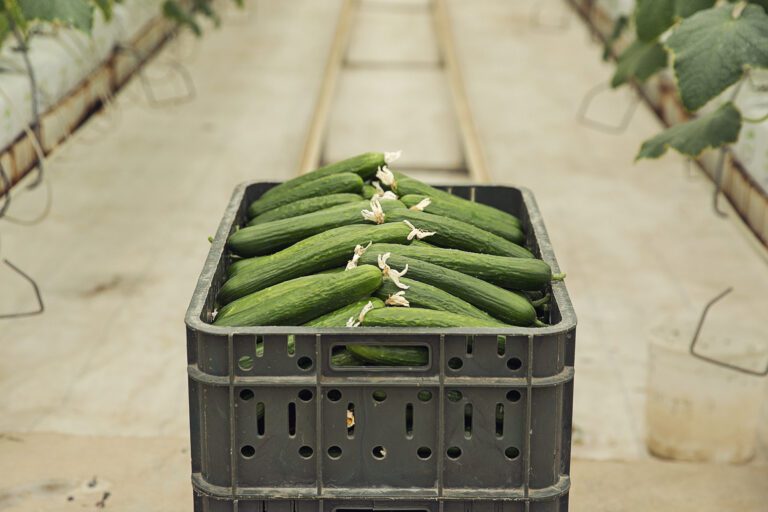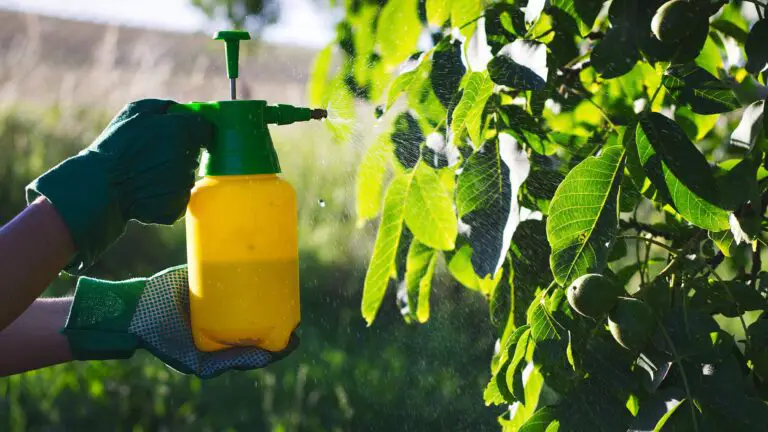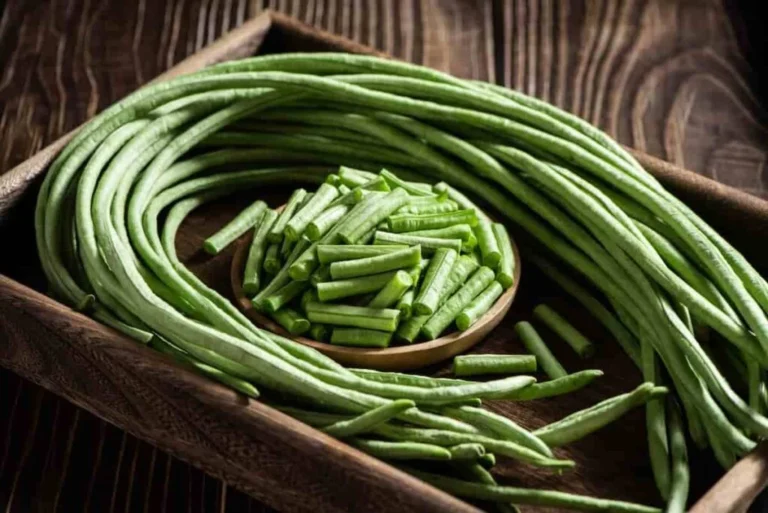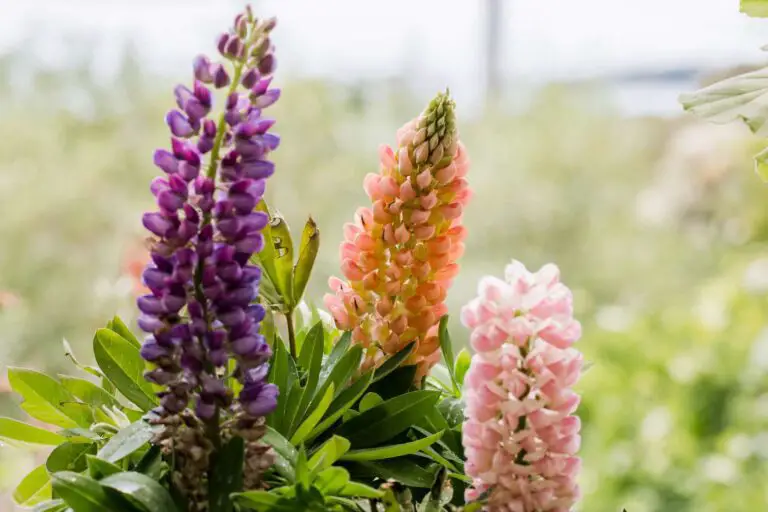Cultivating Passion Fruit Vine: A Journey of Growth
Are you ready to embark on a journey of growth with passion fruit vines? Imagine the lush greenery, the sweet aroma, and the satisfaction of nurturing your own fruitful garden. Cultivating passion fruit vine is not just a hobby; it’s a rewarding experience that brings nature’s bounty to your doorstep. From planting the seeds to harvesting the fruits, every step is filled with excitement and learning opportunities.
Join us as we delve into the world of passion fruit cultivation, sharing tips, tricks, and insights to help you succeed in this delightful endeavor. Get ready to witness your garden flourish and your taste buds rejoice! Let’s grow together with passion fruit vines!
Table of Contents
The Benefits of Cultivating Passion Fruit Vine in Your Garden
Passion fruit vine, also known as Passiflora edulis, can be a wonderful addition to your garden with its numerous benefits.
In summary, cultivating passion fruit vines not only beautifies your garden but also provides a delightful culinary experience! 🌿🍇🌼
Understanding the Different Varieties of Passion Fruit Vine
Passion fruit vine comes in a variety of unique and distinct cultivars, each with its own characteristics and flavors. The followng table comparing the different passion fruit varieties, including their advantages, disadvantages, and characteristics.
| Variety | Advantages | Disadvantages | Characteristics |
|---|---|---|---|
| Purple Passion Fruit | – Bright purple skin- Tangy, tropical flavor<br>- Commonly found in markets and gardens | – Higher acidity may not suit everyone- May be less sweet than other varieties | – Vibrant appearance- Strong flavor- Widely available |
| Yellow Passion Fruit | – Smooth, golden skin- Sweeter taste- Preferred for milder acidity | – Less tangy than purple variety- May not be as visually striking | – Golden color- Sweet flavor- Good for eating fresh or juicing |
| Giant Granadilla | – Large fruit size- Unique appearance- Mild flavor | – Less common in markets- Requires warm climate and ample space for growth | – Huge, round fruit- Greenish-yellow skin- Pulp with seeds |
| Banana Passion Fruit | – Banana-like shape- Sweet and aromatic flavor- Used for desserts and beverages | – Thin skin can be delicate- May not be as hardy as other varieties | – Elongated shape- Yellow skin with dark speckles- Intense fragrance |
| Sweet Granadilla | – Sweet, floral flavor- Popular in South America- Used in desserts and beverages | – Delicate skin prone to bruising- Requires warm climate and well-drained soil | – Round fruit with orange skin- White, jelly-like pulp- Fragrant aroma |
| Black Passion Fruit | – Intense flavor with hints of blackberry and guava- Rich purple-black skin- Widely grown | – May be less sweet than other varieties- Requires warm climate and well-drained soil | – Small, wrinkled fruit- Dark purple-black skin- Aromatic and flavorful |
Remember to choose a variety based on your taste preferences, local climate, and available growing conditions. Each type has its unique qualities, so explore and enjoy the diverse world of passion fruit! 🌿🍇🌼
Choosing the Right Location for Your Passion Fruit Vine

So, you’ve decided to grow your own passion fruit vine. Congratulations! Now comes the crucial step of choosing the right location for your plant.
- Sunlight: Passion fruit vines thrive in sunlight. Choose a spot that receives 6 to 8 hours of direct sunlight daily. More sunlight leads to better fruit production.
- Support Structures: These vigorous climbers need sturdy support. Consider installing a trellis, pergola, or other structures to help the vine grow vertically.
- Space: Passion fruit vines can reach up to 20 feet in length. Ensure the chosen location has enough room for their sprawling growth.
By following these steps, you’ll create an ideal environment for your passion fruit vine to flourish! 🌿🍇🌼
Preparing the Soil and Bed for Planting Passion Fruit Vine
The success of cultivating passion fruit vine in your garden greatly relies on preparing the soil and bed properly before planting. This crucial step ensures that the vine receives the necessary nutrients and provides an optimal environment for growth.

- Choose the Right Spot:
- Select a location that receives full sun for 6-8 hours a day. Passion fruit vines thrive in warm climates.
- Ensure the soil is well-draining to prevent waterlogging.
- Prepare the Area:
- Clear the planting area of any weeds or vegetation to minimize competition for nutrients and water.
- Dig a Hole:
- Dig a hole slightly larger than the pot size of your passion fruit vine.
- Improve Soil Fertility:
- Add organic matter such as compost or well-rotted manure to the soil. This will enhance fertility and drainage.
- Plant the Vine:
- Gently loosen the root ball of the vine before placing it in the hole.
- Fill the hole with soil and firmly press it down around the plant to ensure it stands upright.
- Water Thoroughly:
- Water the plant thoroughly, allowing the moisture to reach the root system.
Remember, proper care and attention during planting will set your passion fruit vine up for success! 🌿🍇🌼
Propagating Passion Fruit Vine: Seeds vs. Cuttings
One frequently asked question when it comes to propagating passion fruit vine is whether to use seeds or cuttings. Both methods have their advantages and it ultimately depends on your preference and resources.
| Aspect | Seeds | Cuttings |
|---|---|---|
| Starting Material | Grown from fresh seeds in a sterile seed starting mix. | Select mature stem cuttings with ideal thickness and leaf nodes. |
| Propagation Process | Soak seeds in warm water before sowing and germinate indoors under grow lights. | Dip cuttings in rooting hormone and plant about 2-4 inches deep in growing media, keeping them moist and providing regular moisture. |
| Time to Planting | Fresh seeds germinate months ahead of older seeds. | Cuttings may be ready for planting in three to four months under optimal conditions. |
| Planting Location | Plant where it cannot be damaged by frost or cold temperatures. | Plant in well-drained soil rich in organic matter, ensuring full sun exposure after climbing. |
| Maintenance | Keep soil evenly moist for seedlings and provide support for vigorous growth. | Train vines up wires or a trellis, maintain regular moisture, and keep insect-free to reduce infections. |
In summary, while seeds offer the advantage of germinating ahead of older seeds, cuttings provide a quicker method of propagation with specific requirements for stem thickness and leaf nodes. Both methods require attention to planting conditions and maintenance for successful growth.u can make an informed decision on how best to propagate your passion fruit vine.
Planting and Transplanting Passion Fruit Vine
- Ideal Timing:
- Spring or early summer is the best time for planting or transplanting passion fruit vines.
- During this period, the weather is mild, and the risk of frost has passed.
- Early planting allows the vine to establish itself before winter’s harsh conditions.
- Climate Considerations:
- Depending on your local climate, you can adjust the planting time.
- Monitor the weather and protect the vine from extreme temperatures during its early growth stages.
- Digging the Hole:
- When planting or transplanting, dig a hole that accommodates the entire root system.
- The hole should be twice as wide and just as deep as the root ball.
- This provides ample space for the roots to spread out and establish a strong foundation.
- Handle with Care:
- Be gentle with the vine to avoid damaging delicate roots.
- Place the vine in the hole, ensuring the top of the root ball is level with the surrounding soil.
- Backfill and Compact Soil:
- Fill the hole with soil and lightly compact it to eliminate air pockets.
- Properly backfilling ensures good soil contact around the roots.
Remember these steps, and your passion fruit vine will have a great start! 🌿🍇🌼
Proper Watering Techniques for Passion Fruit Vine
Watering your passion fruit vine is indeed a critical aspect of maintaining its health. Let’s break down the key points to ensure optimal watering:
Young passion fruit plants: Water them more frequently, typically every two to three days. This helps establish strong root systems.
Established vines: Water them once a week, ensuring the soil remains consistently moist but not waterlogged.
Base watering: Preferably water at the base, near the root zone. This minimizes the risk of fungal diseases and ensures water reaches the roots where it’s needed most.
Use mulch around the base of the plant. It helps retain soil moisture and reduces evaporation.
Be cautious not to over-mulch, as excessive mulching can lead to waterlogging and root rot.
Remember, finding the right balance ensures healthy growth and fruitful yields from your passion fruit vine! 🌿🍇🌼
Feeding and Fertilizing Your Passion Fruit Vine for Optimal Growth
- Frequency:
- Feed your passion fruit vine every two to three months during the growing season.
- Regular feeding supports vigorous growth and fruit development.
- Fertilizer Type:
- Use a balanced fertilizer with a ratio of nitrogen (N), phosphorus (P), and potassium (K).
- Common formulations include 10-10-10 or 14-14-14.
- These fertilizers provide nutrients for both vegetative growth and fruit set.
- Organic Options:
- Consider using organic fertilizers like well-rotted compost or worm castings.
- Organic options enrich the soil and promote overall plant health.
- Application:
- Follow the instructions on the fertilizer packaging for proper rates and frequency.
- Apply the fertilizer carefully to ensure optimal nutrient uptake.
By following these guidelines, you’ll nourish your passion fruit vine for healthy growth and abundant fruit! 🌿🍇🌼
As an avid gardener with a passion for nurturing a variety of plants, I recently incorporated Jobe’s Organics Granular All Purpose Fertilizer into my gardening routine. After thorough usage, I am delighted to share my experience with this remarkable product.First and foremost, the organic nature of this fertilizer aligns perfectly with my commitment to sustainable and environmentally-friendly gardening practices. Knowing that it is OMRI listed for organic gardening by the USDA provides me with the assurance that no synthetic chemicals are being introduced into my garden ecosystem.
Another aspect that impressed me is the ease of application. The fertilizer comes in a convenient, easy-pour bag, allowing for hassle-free dispensing and minimal mess. Whether spreading it over the soil surface or incorporating it into the planting hole, the granules disperse evenly, ensuring uniform coverage and optimal nutrient uptake by plants.In conclusion, I wholeheartedly recommend Jobe’s Organics Granular All Purpose Fertilizer to fellow gardeners seeking a reliable and effective solution for nourishing their plants.
- Organic Certification: Jobe’s Organics Granular All Purpose Fertilizer is OMRI listed for organic gardening by the USDA, ensuring that it meets stringent organic standards. This certification provides peace of mind to environmentally-conscious gardeners.
- Versatility: This fertilizer is suitable for a wide range of plants, including vegetables, flowers, shrubs, trees, and houseplants. Its versatility makes it convenient for gardeners with diverse planting needs.
- Fast-Acting Formula: The fertilizer’s fast-acting nature means that users can observe noticeable results in a short period. This is particularly beneficial for promoting rapid growth and healthy development of plants.
- Biozome Technology: Jobe’s Biozome, a proprietary blend of microorganisms, enhances soil conditions, improves nutrient absorption, and helps plants resist disease, insects, and drought. It contributes to overall soil health and plant vigor.
- Easy Application: The fertilizer comes in a convenient, easy-pour bag, facilitating hassle-free application. Whether spreading it over the soil surface or incorporating it into the planting hole, users can achieve uniform coverage with minimal effort.
- Safe for Environment and Health: Being free from synthetic chemicals, Jobe’s Organics Granular Fertilizer is safe for the environment, as well as for use around children and pets. It aligns with eco-friendly gardening practices.
- Scent: Some users may find the scent of the fertilizer slightly noticeable. While it is not overwhelming, it may be a minor inconvenience for individuals sensitive to odors.
- Frequency of Application: Although granular fertilizers generally require less frequent application compared to liquid fertilizers, some users may prefer the convenience of a single application or more prolonged effectiveness.
Pruning and Training Passion Fruit Vine for Maximum Yield
Pruning and training passion fruit vines are essential practices to maximize fruit production. Here is a summary of the key steps involved in pruning and training passion fruit vines based on the information gathered from various sources:
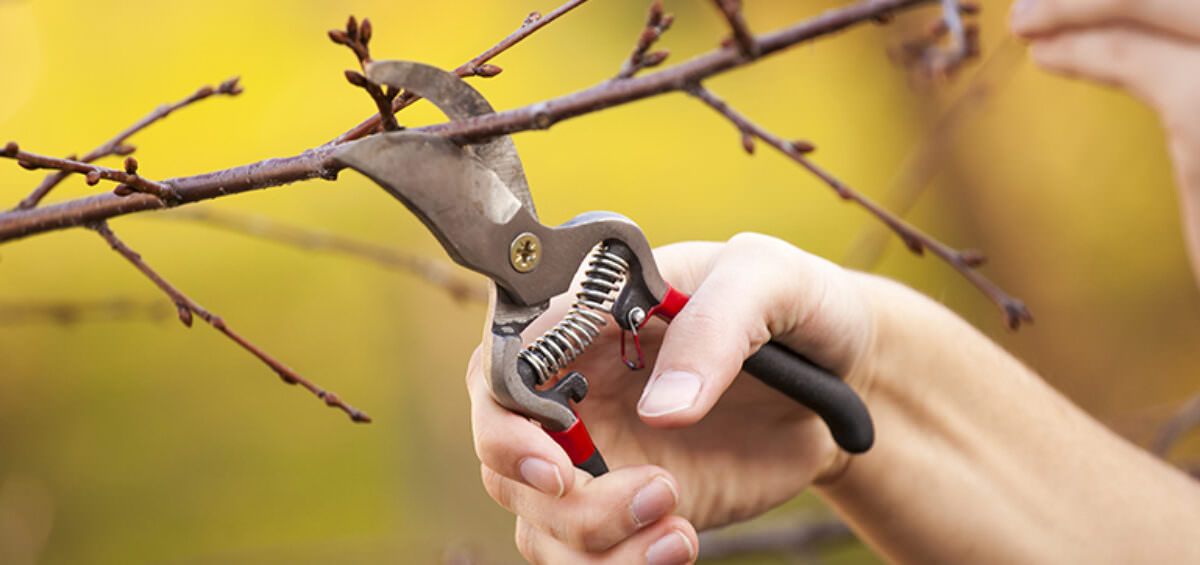
Initial Training:
- First Year: Begin pruning during the first year to establish a strong framework. Select one or two main stems as primary leaders and remove competing shoots at ground level. Provide a sturdy trellis for support and tie the main stems to encourage upward growth.
- Second Year Onwards: Prune all branches coming off the laterals to short stubs with a few buds. These will regrow into new branches each year bearing fruit.
Regular Maintenance Pruning:
- Remove Weak Growth: Periodically inspect the vine for weak or spindly growth and prune away any stems that appear weak or diseased to maintain plant vigor.
- Thin Out Overcrowded Areas: Thinning out crowded areas allows better air circulation and sunlight penetration, promoting healthier growth.
Renewal Pruning:
- Renew Older Vines: As passion fruit vines age, older wood may become less productive. Conduct renewal pruning by cutting back a portion of the older vines to stimulate new growth.
Post-Harvest Pruning:
- After Fruit Harvest: Conduct post-harvest pruning once the main fruiting season is over to maintain plant health and prepare for the next growing season.
Additional Tips:
- Pruning Timing: Late winter is optimal for pruning as the plant is not actively growing, reducing the risk of removing flower buds. Avoid hard pruning, especially in cooler climates, to prevent damage to the vine.
- Training Methods: Train young plants by tying them to a support structure. Regularly prune side shoots, thin out weak growth, and maintain a well-supported framework for optimal fruit production.
By following these pruning and training practices, you can ensure that your passion fruit vine remains healthy, productive, and well-structured for maximum yield.
Common Pests and Diseases Affecting Passion Fruit Vine and How to Manage Them
Below is a comprehensive table summarizing common pests and diseases that affect passion fruit vines, along with their symptoms, treatments, and effects:
| Pest/Disease | Symptoms | Treatment | Effects |
|---|---|---|---|
| Passionvine Hopper | – Stunted growth- Wilting and yellowing leaves- Premature fruit drop- Sticky honeydew | – Hose off insects- Trim affected parts- Spray with oil-based insecticide (e.g., white oil) | Damage to vine and fruit |
| Scale Insects | – Brown, black, or red lumps on stems, leaves, and fruit- Sooty mold- Ant attraction | – Scrape off manually- Apply oil-based insecticide (e.g., white oil)- Wipe off sooty mold | Reduced plant health and fruit quality |
| Mealybugs | – Creamy, waxy insects on stems and leaves- Sooty mold- Ant presence | – Remove by hand- Release mealybug predators- Apply horticultural spray oil (e.g., Neem oil) | Sooty mold and compromised plant vigor |
| Passionfruit Woodiness Virus | – Distorted growth- Crinkled, yellow leaves- Woody fruit | – No direct control- Fertilize and water stressed plants- Consider planting new vines | Reduced fruit quality and overall vine health |
| Fungal Diseases (e.g., Brown Spot) | – Dead spots on leaves with yellowish halos- Blotches on ripening fruit- Scabby fruit- Dropped fruit | – Select disease-resistant vine varieties- Remove and dispose of diseased fruit- Prune for air circulation- Apply copper-based fungicide | Flaws on leaves and fruit, potential fruit drop |
| Fruit Fly | – Small reddish-brown flies stinging fruit- Pinprick holes and woody lumps- Dropped fruit | – Monitor and trap fruit flies- Bag fruit to prevent infestation | Woody lumps on fruit, compromised fruit quality |
Remember to regularly monitor your passion fruit vine and take prompt action to manage these pests and diseases for healthy growth and abundant fruit! 🌿🍇🌼
I have been using these two spray bottles for spraying in my garden. Both have good quality. Highly recommended from my side.
✔ Adjustable Nozzle: The sprayer comes equipped with an adjustable nozzle that allows users to customize the spray pattern according to their specific cleaning needs. From a fine mist to a direct stream reaching up to 30 feet, this versatility ensures versatility in tackling various cleaning tasks.
✔ Ergonomic Trigger Design: Designed for user comfort, the sprayer features an ergonomic trigger that accommodates three-finger spraying, reducing fatigue during prolonged use. This design feature enhances user experience, particularly for tasks requiring extended spraying sessions.
✔ Graduated Measurements: The bottle includes graduated measurements on the side, making accurate refilling simple. This feature ensures that users can precisely measure and mix cleaning solutions, minimizing waste and maximizing efficiency.
✔ Durable Construction: Constructed from durable plastic, the Zep Professional Sprayer Bottle is built to withstand the rigors of regular use. Its sturdy build ensures longevity, providing users with a reliable cleaning tool that stands the test of time.
✔ Reusable and Easy to Clean: The sprayer is reusable and easy to clean, allowing for multiple applications and reducing environmental waste associated with disposable alternatives. Its hand-wash-only maintenance requirement adds to its eco-friendly appeal.
❌ Limited Size Options: The Zep Professional Sprayer Bottle is available in a 32-ounce capacity, which may not be suitable for users with larger cleaning tasks or those requiring smaller, more portable options. Additional size variations could provide more flexibility to accommodate diverse needs.
✔ Versatile Usage: This spray bottle is suitable for various purposes, including household cleaning, homemade solutions, and plant care. Its multi-use functionality adds value and convenience to the user, allowing them to tackle different tasks with a single product.
✔ Stylish Appearance: With its sleek design and gray color, the Full Circle Bottle Service adds a touch of style to any cleaning routine. The bamboo neck and removable silicone base enhance its aesthetic appeal while providing durability and protection to the glass bottle.
✔ Durable Construction: Despite being made of glass, the bottle is designed to withstand regular use. The addition of a silicone boot helps to prevent breakage from accidental knocks or drops, prolonging its lifespan and ensuring long-term durability.
✔ Two Spray Settings: The bottle offers two spray settings: a single stream or a mist option. This versatility allows users to adjust the spray pattern according to their specific cleaning needs, providing greater control and efficiency during use.
✔ Plastic and Carbon Neutrality: Full Circle demonstrates a commitment to environmental responsibility by being plastic neutral and offsetting all emissions from international shipping. This initiative aligns with sustainability goals and encourages conscious consumerism.
❌ Issues with Nozzle Mechanism: A few users have experienced problems with the nozzle mechanism, noting that it may stick or malfunction when the trigger is squeezed. This can affect the usability and overall performance of the spray bottle, leading to frustration for some users.
❌ Limited Sturdiness: The sturdiness of the bottle has received mixed reviews, with some users expressing disappointment in its ability to withstand regular use. While the silicone boot provides some protection, it may not be sufficient to prevent breakage in all situations, especially if the bottle is dropped from a significant height.
Harvesting and Storing Passion Fruit from Your Vine
Harvesting passion fruit is a rewarding experience, and knowing when they’re ripe is essential.

- Signs of Ripe Passion Fruit:
- Appearance: Look for a wrinkled skin. Depending on the variety, ripe passion fruits can be deep purple or yellow.
- Fragrance: When the fruits emit a sweet and heady aroma, they are ready for harvest.
- Harvesting Techniques:
- Gentle Grasping: To avoid damage, gently grasp the fruit and twist it until it separates from the vine.
- Using Garden Shears: If the fruit doesn’t detach easily, use sharp garden shears to cut the stem.
- Be careful not to harm neighboring fruits or the vine itself.
- Post-Harvest Care:
- Storage: Place the harvested passion fruits in a well-ventilated area at room temperature.
- Allow them to continue ripening and develop their characteristic flavor.
Remember these tips, and soon you’ll be savoring the delicious taste of your homegrown passion fruits! 🌿🍇
Evaluating the Success of Your Passion Fruit Vine: Yield and Quality
One of the key indicators of success when cultivating passion fruit vine is the yield and quality of the fruits it produces. Evaluating these factors can provide valuable insights into the health and productivity of your vine. Here are answers to some unique frequently asked questions regarding evaluating the success of your passion fruit vine:
1. How can I determine the yield of my passion fruit vine?
Measuring the yield of your passion fruit vine involves counting the number of fruits harvested within a specified period. This can be done by keeping track of the fruits collected each week or month. By comparing the yield over time, you can identify any variations or trends and make adjustments to optimize productivity.
2. What factors affect the quality of passion fruit?
The quality of passion fruit is influenced by several factors, including its size, color, texture, and flavor. It is important to assess these characteristics to determine the overall quality of the fruits. Factors such as proper watering, adequate sunlight, and balanced nutrition can contribute to improved fruit quality. Regular monitoring and sampling of the fruits will provide valuable information on their taste, aroma, and appearance.
Troubleshooting Common Issues with Passion Fruit Vine Growth
One common issue that gardeners may encounter when growing passion fruit vine is the presence of yellowing leaves. This can be a sign of nutrient deficiency, particularly a lack of nitrogen or iron.
- To prevent this, ensure that you are providing your plant with a balanced fertilizer that contains these essential nutrients.
- Additionally, make sure that the soil pH is appropriate for your passion fruit vine, as an imbalanced pH can also affect nutrient absorption.
- Another frequently asked question is why passion fruit vine may not be setting fruit.
- One possible reason for this is poor pollination.
- Passion fruit vines rely on insects, such as bees, to transfer pollen from the male flowers to the female flowers in order for fruit to develop.
- If you are not seeing any pollinators around your garden, you can try manually transferring pollen using a small brush.
- Another factor that can affect fruit set is insufficient sunlight.
- Passion fruit vines thrive in full sun, so be sure to choose a location that receives at least 6-8 hours of direct sunlight per day for optimal fruit production.
Expanding Your Passion Fruit Vine Garden: Tips for Scaling Up
Scaling up your passion fruit vine garden requires thoughtful planning and some essential considerations. Let’s address these questions step by step:
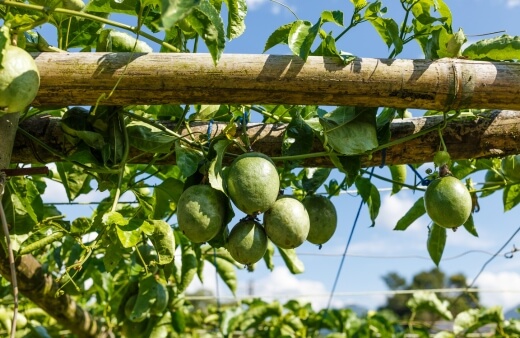
- Spacing Between Passion Fruit Vines:
- Recommended Spacing: Allow 6 to 8 feet between each vine.
- Why?:
- Optimal Growth: Sufficient space ensures that each vine has room to spread its roots and grow without competing with neighboring plants.
- Prevent Overcrowding: Crowded vines can lead to reduced fruit production and hinder overall health.
- Air Circulation: Adequate spacing allows air to circulate freely, reducing the risk of fungal diseases.
- Support for Passion Fruit Vines:
- Why Provide Support?:
- As vines mature and bear fruit, their weight increases.
- Without proper support, branches may break or sag under the load.
- Recommended Solutions:
- Trellises: Install sturdy trellises or wire structures near the vines.
- Vines can climb and spread along the trellis, keeping them off the ground.
- Trellises also make pruning and harvesting easier.
- Pergolas: These overhead structures provide shade and support.
- Vines can be trained to grow over pergolas, creating a beautiful canopy.
- Pergolas enhance sunlight exposure, crucial for fruit development.
- Trellises: Install sturdy trellises or wire structures near the vines.
- Why Provide Support?:
- Planning Ahead:
- Garden Layout: Before planting, map out your garden.
- Mark Spots: Designate specific spots for each passion fruit vine.
- Consider Sunlight: Ensure each vine receives adequate sunlight throughout the day.
- Accessibility: Plan for easy access to tend to the vines, prune, and harvest.
- Garden Layout: Before planting, map out your garden.
Remember, a well-spaced and supported passion fruit vine garden will reward you with abundant fruit and a lush, thriving landscape. Happy gardening! 🌿🍇
Exploring Creative Uses for Passion Fruit in Culinary Delights
Passion fruit is indeed a versatile and exciting ingredient that can elevate your culinary creations. Let’s explore some creative ways to use this exotic fruit:
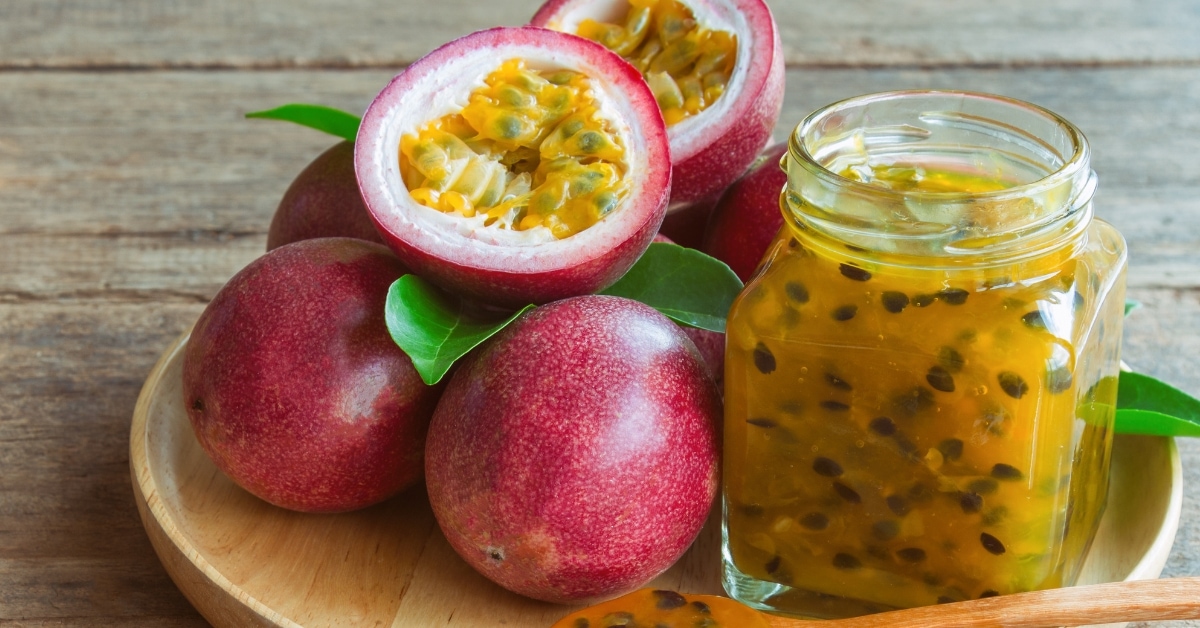
What: A zesty dressing made with passion fruit juice.
How:Mix passion fruit juice with olive oil, vinegar (such as white wine vinegar), honey, Dijon mustard, salt, and pepper.
Drizzle over fresh green salads or grilled vegetables.
Why:The fruit’s bright acidity balances well with savory dishes.
Adds a tropical twist to your salads.
What: A luscious, creamy filling made from passion fruit.
How:Whisk together passion fruit juice, egg yolks, sugar, and butter.
Cook over low heat until thickened.
Use as a pie or tart filling or spread it on scones.
Why:Rich and indulgent, with a burst of tangy flavor.
Perfect for desserts and tea time treats.
What: Use passion fruit in marinades for meats (chicken, fish, or pork).
How:Combine passion fruit juice with garlic, ginger, soy sauce, and a touch of brown sugar.
Marinate your protein before grilling or roasting.
Why:Infuses the dish with tropical flair.
The acidity tenderizes meat and adds depth of flavor.
What: Drizzle passion fruit pulp over vanilla or coconut ice cream.
How:Scoop out the seeds and pulp from fresh passion fruit.
Spoon it generously over your favorite ice cream.
Why:The contrast of creamy ice cream and tangy fruit is delightful.
Instantly transports you to a tropical paradise.
Remember, passion fruit’s vibrant flavor can enhance both sweet and savory dishes. Get creative, experiment, and enjoy the tropical vibrancy it brings to your kitchen! 🌺🍹🍨
The Future of Passion Fruit Vine Cultivation: Trends and Innovations
- Vertical Gardening Systems:
- What: Vertical gardening involves growing plants upward, utilizing walls, trellises, or other structures.
- Why: It maximizes space efficiency, making passion fruit cultivation feasible even in small areas like balconies or urban gardens.
- Benefits:
- Higher Yield: Vines grow vertically, increasing fruit production per square foot.
- Aesthetic Appeal: Cascading vines create a visually stunning garden display.
- Precision Agriculture Techniques:
- What: Precision agriculture uses technology (sensors, drones) to optimize farming practices.
- How It Helps Passion Fruit Vines:
- Soil Monitoring: Sensors track soil moisture levels, ensuring optimal conditions.
- Nutrient Detection: Identify nutrient deficiencies early for targeted fertilization.
- Plant Health Assessment: Assess individual plant health using real-time data.
- Benefits:
- Improved Decision-Making: Accurate information guides farmers.
- Resource Efficiency: Optimize water, fertilizers, and other inputs.
- Higher Productivity, Lower Environmental Impact.
- Staying Ahead:
- Stay Informed: Keep up with industry developments, research, and best practices.
- Adapt: Embrace new technologies and techniques.
- Sustainability: Balance yield with eco-friendly practices.
As the passion fruit vine cultivation landscape evolves, enthusiasts can look forward to even more exciting advancements! 🌱🍇
Watch video for more information:
FAQ
What are the benefits of cultivating passion fruit vine in your garden?
Cultivating passion fruit vine in your garden offers several benefits, including the opportunity to enjoy fresh and flavorful fruit, beautify your outdoor space with attractive vines and flowers, and potentially generate additional income through selling excess produce.
How can I understand the different varieties of passion fruit vine?
There are several different varieties of passion fruit vine, with the most common being the purple passion fruit and the yellow passion fruit. Each variety has its own unique characteristics in terms of fruit size, flavor, and vine growth, so it’s important to research and select the variety that best suits your preferences and growing conditions.
What factors should I consider when choosing the right location for my passion fruit vine?
When selecting a location for your passion fruit vine, consider factors such as adequate sunlight (at least 6-8 hours per day), well-drained soil, protection from strong winds, and sufficient space for the vine to spread and climb.
How do I prepare the soil and bed for planting passion fruit vine?
To prepare the soil for planting passion fruit vine, ensure it is well-draining and rich in organic matter. Remove any weeds or grass from the planting area, loosen the soil, and incorporate compost or aged manure to improve fertility and moisture retention.
Should I propagate passion fruit vine using seeds or cuttings?
Passion fruit vine can be propagated using both seeds and cuttings. Seeds are a more common method and are relatively easy to germinate, while cuttings offer a faster way to grow new plants with identical traits to the parent plant.
What are the proper watering techniques for passion fruit vine?
Passion fruit vine requires regular watering, especially during dry periods. It is important to provide a deep watering at least once a week, ensuring that the soil is moist but not waterlogged. Mulching around the base of the plant can help retain moisture and regulate soil temperature.
How and when should I prune and train passion fruit vine?
Pruning and training passion fruit vine is essential for maximum yield and easier management. Prune back overgrown or dead branches, and train the vine along a trellis or support structure to promote upward growth and efficient fruit production.
What Are Some Common Pests And Diseases Affecting Passion Fruit Vine, And How Can I Manage Them?
Common pests that can affect passion fruit vine include aphids, mealybugs, and fruit flies, while diseases like fusarium wilt and root rot can also be problematic. Implementing proper sanitation practices, using organic pest controls, and regularly inspecting your plants can help manage these issues effectively.
How do I harvest and store passion fruit from my vine?
Passion fruit is ready to harvest when it turns fully colored and slightly wrinkled. Gently twist or cut the fruit from the vine, and store it at room temperature until it fully ripens. Once ripe, passion fruit can be stored in the refrigerator for up to two weeks.
How can I evaluate the success of my passion fruit vine in terms of yield and quality?
To evaluate the success of your passion fruit vine, measure the quantity and quality of the fruit produced. Keep a record of the number of fruits harvested, their size, and taste. This will help you track the progress of your vine and make any necessary adjustments to improve future yields.
What are some common issues with passion fruit vine growth, and how can I troubleshoot them?
Common issues with passion fruit vine growth include poor fruit set, yellowing leaves, and slow growth. These problems can be caused by inadequate pollination, nutrient deficiencies, or improper watering. Troubleshoot these issues by ensuring proper pollination, providing adequate nutrients, and adjusting watering practices accordingly.
How can I scale up my passion fruit vine garden?
To scale up your passion fruit vine garden, consider expanding your planting area, adding additional trellises or support structures, and planting more vines. Ensure that you have enough space, resources, and time to manage a larger garden effectively.
What are some creative uses for passion fruit in culinary delights?
Passion fruit is a versatile ingredient that can be used in various culinary delights. It can be used to make refreshing drinks, tropical desserts, and tangy sauces. It also pairs well with seafood, poultry, and salads, adding a unique and exotic flavor.
What are the future trends and innovations in passion fruit vine cultivation?
The future of passion fruit vine cultivation holds several exciting trends and innovations, including the development of new disease-resistant varieties, advancements in vertical farming techniques for urban cultivation, and the integration of smart agriculture technologies to optimize irrigation and nutrient management.

Studied Agricultural Engineering-Plant Protection at University of California, Davis.
Head of Content writing team at Southelmontehydroponics.com

